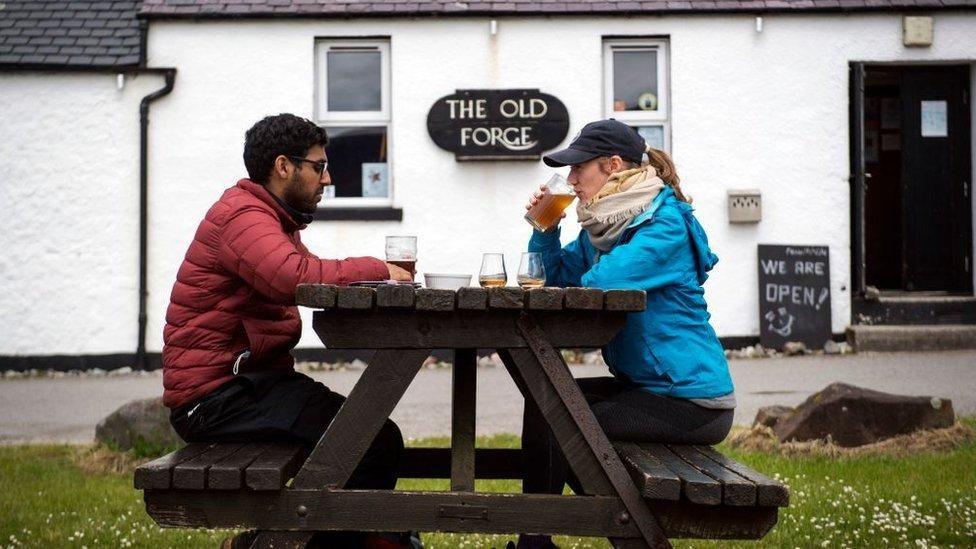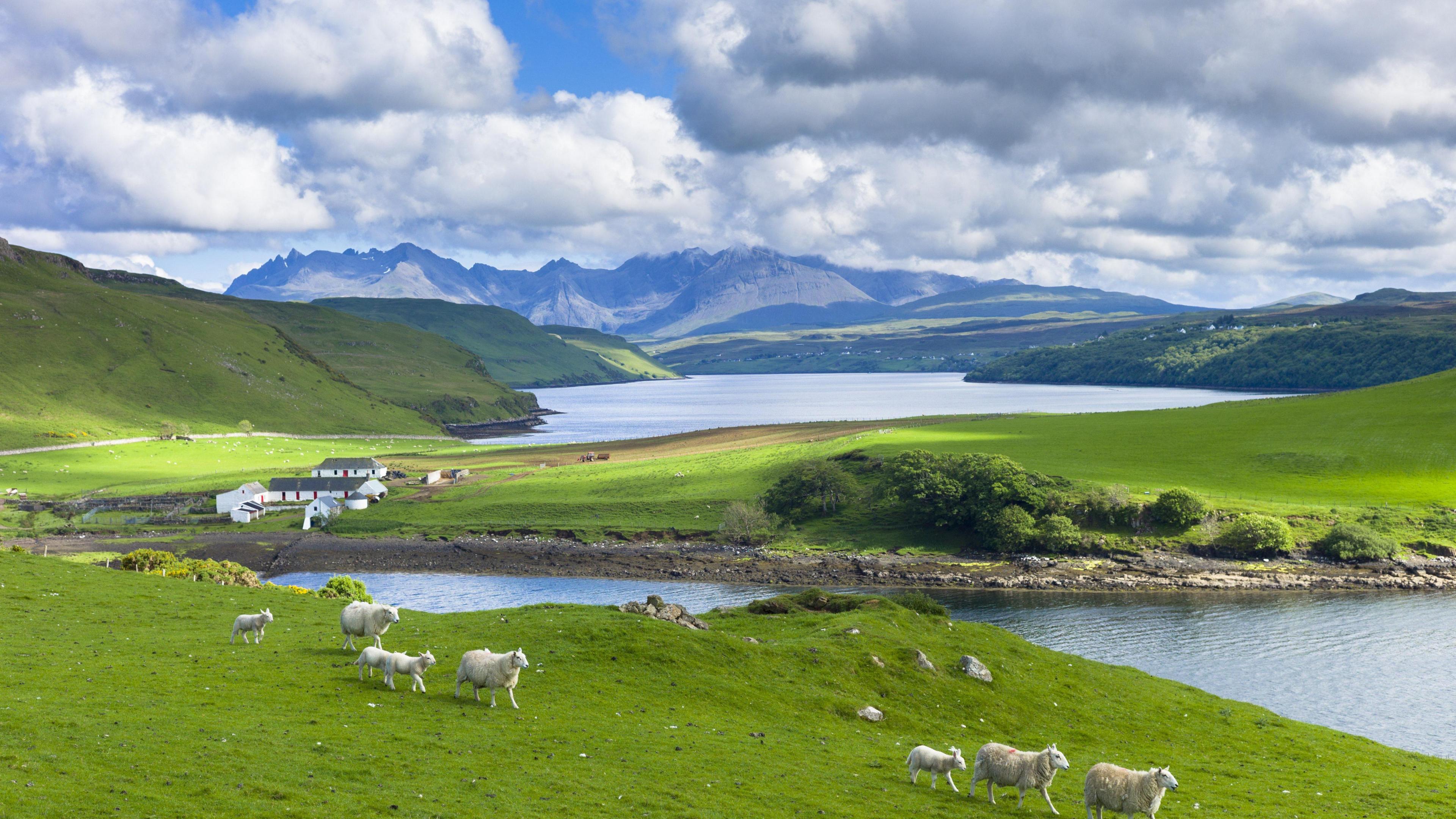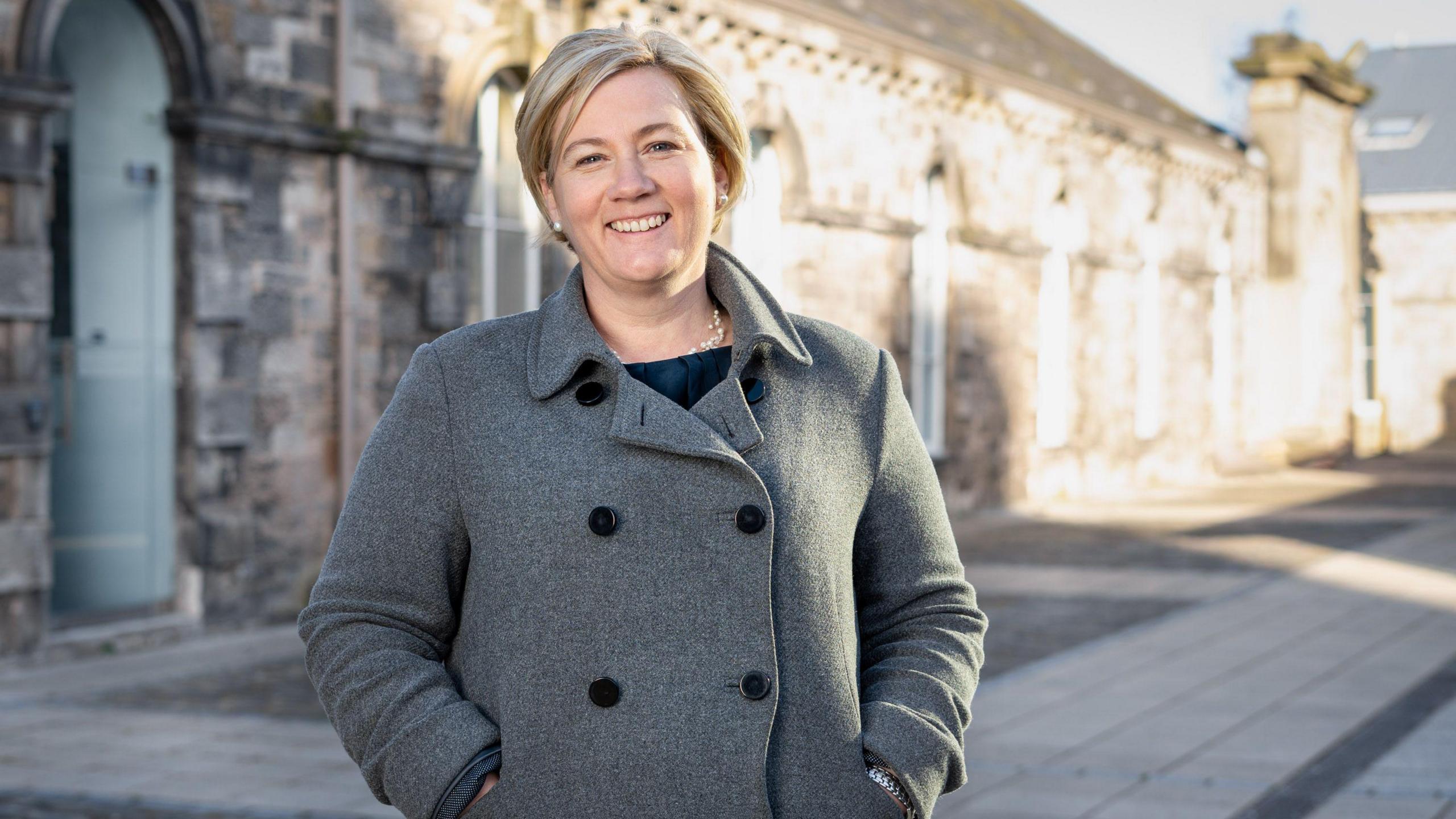Why is land reform on the agenda in Scotland?

The Assynt estate was taken into community ownership 20 years ago
- Published
MSPs have passed legislation which could allow the government to intervene in private land sales and require for large estates to be broken up.
Ministers said they wanted to address the high concentration of land ownership in the hands of relatively few people.
The proposals have been controversial with landowners and some opposition politicians, who believe they create red tape and could damage rural businesses.
But others say they want the plans to go further, with Labour and the Greens pushing for the new rules to apply to more estates.
Hundreds of amendments had been proposed to the bill, and a succession of late-night sittings were held at Holyrood. The final vote was held on Wednesday night.
Why is this happening?

The UK's most remote pub The Old Forge in Knoydart is community owned
Scotland has one of the most concentrated land ownership patterns in the developed world.
At times this has lead to social struggles - such as when crofters won legal rights in 1886 - and inspired plays and protest.
Communities in the Highlands and Islands have bought and managed vast swathes of land over recent decades, and a community right-to-buy was made law in 2003.
However many still feel that more change is needed.
Research by the former Green MSP Andy Wightman suggests that the concentration of landowners has increased , externalin recent years with 50% of privately-owned rural land owned by around 420 people.
Around 4% is owned by people and companies from abroad.

Rural Secretary Mairi Gougeon said further land reform measures were needed
Land in Scotland has also become more expensive in recent years and off-market sales are still common, according to the Scottish Land Commission, external.
Communities can also have land sales sprung on them.
Residents in the south of the Isle of Skye complained when they learned a 20,000 acre estate would be on the market with only two days notice.
Rural Secretary Mairi Gougeon said the case was a good example of why further land reform measures were needed.
A parliamentary committee said , externalthe scarcity of useful land "stops some communities flourishing."
Introducing the bill, Gougeon said that the Scottish government does "not feel its right that ownership and control of much of Scotland's land is still in the hands of relatively few people."
The Land Reform (Scotland) Bill, external aims to address the concentration of landownership as well as giving communities a greater say in what happens on privately owned land.
What's in the bill?

The new laws would regulate how land is used across Scotland as well as how land can be bought and sold.
This would affect lots of different people, like the owners of huge estates, tenant farmers and crofters, and community-run projects.
There have already been big changes over the years, but the Scottish government said that the benefits and opportunities of the country's land needs to be more widely shared.
The bill is in two parts.
The first part would make owners of the biggest landholdings tell the surrounding community more about what happens on the land.
It also suggests ways to make it easier for community groups to buy land when it comes up for sale.
The second part deals with agricultural and environmental uses of leased farm land.
But even while recommending the bill to parliament, the Net Zero, Energy and Transport committee said it was too big and too complicated.
Why is it controversial?

Scottish Land and Estates CEO Sarah-Jane Laing said the bill required "significant revisions"
While there is broad support for much of what's in the bill, the first part - about land ownership and use - is more controversial.
Private landowners have warned that ministers would be given far too much power to "interfere" in landowners' business, including forcing the break up of large estates before they are sold into smaller lots.
Scottish Land and Estates, an organisation of rural landowners, said that too much "unevidenced" focus was being put on large landholdings.
And it argued that big estates could actually help meet aims like climate targets.
Chief executive Sarah-Jane Laing said the bill required "significant revisions".
She added: "As it stands, it threatens to burden rural businesses with excessive red tape and add significant costs to the public purse while failing to deliver real benefits for communities."
But land reform campaigners think the bill does not go far enough.
Community Land Scotland (CLS) urged MSPs to push for tougher changes to break up "archaic" landownership in Scotland.
Dr Josh Doble, CLS policy manager, said: "Scotland's history of concentrated landownership and lack of public oversight a has resulted in one of the world's most depleted natural environments, alongside a lack of opportunities, democracy and wealth sharing."
What was said at Holyrood?
Most political parties backed the general principles of the bill.
But during the Holyrood debate, the Scottish Conservatives urged the Scottish government to scrap the bill and pursue other means by "working with landowners".
Rural Affairs Secretary Mairi Gougeon told MSPs the reforms would improve how land was owned and managed for the benefit "of the many, not the few".
She said they would allow communities to "breathe new life into rural communities".
Addressing concerns that the bill was not sufficiently radical, she said the reforms were "balanced and proportionate".
Scottish Conservative rural affairs spokesperson Tim Eagle described the bill as "unworkable and devastating", arguing it would "damage rural businesses and reduce the land available for rent".
Other parties argued that the reforms did not go far enough.
Scottish Labour rural affairs spokeswoman Rhoda Grant said: "We support any improvements to Scotland's land management, but this weak bill is largely tinkering around the edges.
"The only significant change is to introduce untested lotting provisions and to take steps to stop off-market sales."
Green rural affairs spokesperson Ariane Burgess said ministers had shown a "lack of ambition to deliver the real land reform that is so vital".
After three days of debates, with almost 400 amendments lodged, the Land Reform (Scotland) Bill was passed with 85 supporting, 28 in opposition and nine abstaining.
Related topics
- Published26 March
